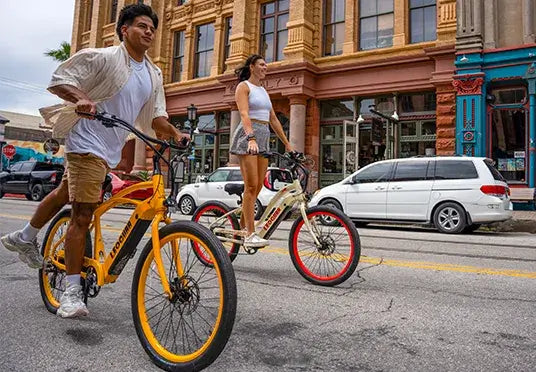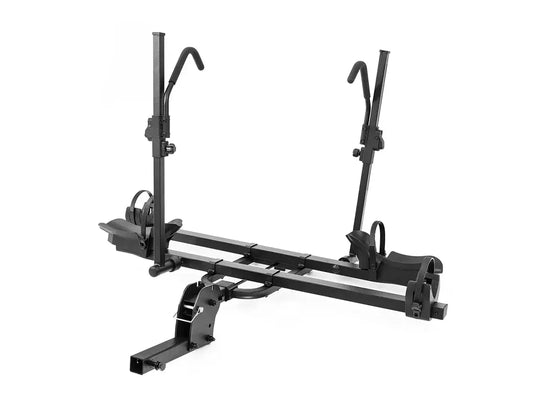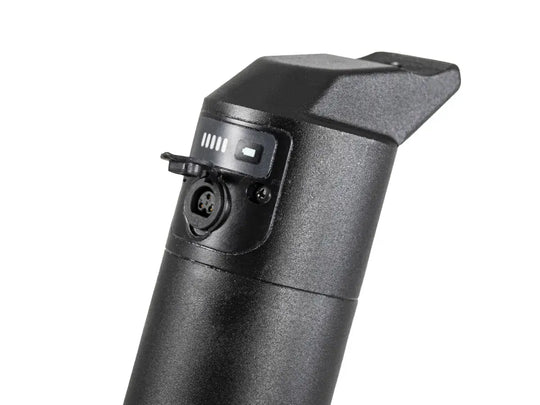
Torque Sensor vs. Cadence Sensor: Which Type Fits Your Electric Bike Riding Style Better?
The sensor is the electric bike’s behind-the-scenes workhorse, ensuring its responsiveness. Yeah, you need a powerful motor that can propel you through the distance of your commute, but much more, you need a sensor that adapts to your riding style and gives you optimal ease when riding.
At Leoguar, we understand this need and are passionate about crafting e-bikes that seamlessly integrate with your riding style. A crucial part of achieving this is sensor choice. But with terms like "torque sensor" and "cadence sensor" being thrown around, you might wonder: what exactly do these sensors do, and where are they even located?
Let's hop on for a quick ride and explore the world of e-bike cadence vs torque sensors. We'll unveil their hidden functions, discover their typical placements on the bike, and ultimately help you decide which sensor type best complements your riding experience.
What Is a Torque Sensor on an Ebike?
Let’s say you’re riding along after a long day at work. But then, there is a little hill you have to climb to reach your destination. Instinctively, you press down harder on the pedals to generate torque for the climb. That’s where an ebike with torque sensor comes in.
How Torque Sensors Work
Unlike cadence pedal sensors that measure your pedaling speed, torque sensors are like tiny einsteins of the e-bike world. Nestled near the bottom bracket, they act as a force gauge, meticulously measuring the torque of the twisting force you apply with each pedal stroke. It is like a built-in scale that translates your leg power into a signal.
The motor controller sends this signal to the e-bike's brain. Here's where real-time communication gets exciting. The controller interprets the signal, understanding exactly how hard you're working. The harder you push, the higher the torque reading, and the motor kicks in seamlessly, providing the electric assistance you need to conquer that incline.
Benefits of Torque Sensors for Electric Bikes
Let's explore the practical advantages torque sensor offers for your torque sensor e-bike adventures:
Torque sensors eliminate the jerk-and-go sensation familiar to many e-bikes by providing a smooth, proportional response. As you gradually increase your pedaling force, the motor assistance seamlessly ramps up, mimicking the natural feel of a traditional bike. This allows for far more nuanced control, especially on rough terrain or when navigating city streets with stop-and-go traffic. You're always in complete command of the power delivery.
One of the biggest draws of e-bikes is the ability to amplify your effort, not replace it. Torque sensors excel at this. By precisely matching your pedaling force with motor assist, they create a riding experience that feels incredibly natural. It's like having a constant tailwind propelling you forward, yet you still get the satisfaction of a good workout. This is particularly rewarding for cyclists who want to maintain their fitness while enjoying the extra boost an e-bike provides.

What Is a Cadence Sensor on an Ebike?
Let's shift gears and explore another popular sensor option: the cadence sensor. While torque sensors focus on the "how hard" of your pedaling, cadence sensors keep things simple by concentrating on the "how fast."
How Cadence Sensors Work
The cadence pedal sensor is strategically placed at your crank arm to detect the rotation of your pedals, measuring your pedaling cadence (speed) in rotations per minute (RPM). It is like a digital metronome keeping track of your pedaling rhythm.
When you pedal, the sensor sends a signal to the motor controller, which kicks in immediately, regardless of how hard you push, unlike the ebike torque sensor that kicks in after a particular torque reading. Essentially, it rewards any movement with a power boost.
Benefits of Cadence Sensors for Electric Bikes
Cadence sensors might not offer the nuanced control of torque sensors, but they have their distinct advantages:
Cadence sensors are incredibly user-friendly. Hop on your e-bike, pedaling, and the motor kicks in, providing consistent assistance. There is no need to worry about adjusting power levels based on terrain – the sensor handles it all. This straightforward approach makes cadence sensors ideal for casual riders prioritizing a simple and intuitive electric bike experience.
Compared to ebike with torque sensors, cadence sensors are generally less expensive. This translates to a more accessible price point for e-bikes equipped with them. A cadence pedal sensor might be your sweet spot if you're budget-conscious and crave a straightforward electric boost to enhance your rides.
Comparing Electric Bike Riding Styles
Now that you've explored the inner workings of torque and cadence sensors, it's time to strategize and identify which best complements your riding style. Let's delve into the world of enthusiastic riders and casual cruisers to help you pick your perfect e-bike match.
Torque Sensor for Enthusiastic Riders
Do you crave an e-bike experience that mirrors the thrill of a traditional bike but with an extra dose of power? A ebike torque sensor might be your ideal riding companion. Here's why:
With a torque sensor, the harder you push on the pedals, the more electric assistance you receive. It's a genuinely responsive system that feels incredibly natural. You're constantly in control, precisely modulating your effort and the motor's response, just like on a regular bike. This makes conquering challenging terrain and technical trails a breeze.
Rough riding often demands nuanced control. With a torque sensor, you can feather the pedals on loose gravel or navigate tight corners with newfound confidence. The precise power delivery allows you to tackle any obstacle with finesse, maximizing your riding enjoyment.

Cadence Sensor for Casual Riders
Perhaps you envision a more relaxed e-bike experience where effortless cruising takes center stage. If that sounds like your ideal ride, then a cadence pedal sensor might be your perfect partner:
Cadence pedal sensors offer a predictable and smooth power delivery. Start pedaling, and the motor kicks in, providing a consistent assist level. This makes them ideal for leisurely rides, scenic explorations, or simply commuting to work without breaking a sweat.
You don’t have to keep monitoring how hard you pedal—with cadence sensors, it's all about keeping your feet moving. This makes them perfect for riders who prioritize ease of use and a relaxed riding experience. Just hop on, start pedaling, and enjoy the ride!
Leoguar Bikes Suit Your Preferences
We understand that every rider has unique preferences. That's why we offer two distinct sensor options on our Flippo folding e-bikes: a cadence sensor for the standard Flippo and an ebike torque sensor for the performance-oriented Flippo Pro. Let's explore how each cadence vs torque sensor caters to your riding style:
Cadence Sensor for Leoguar Flippo
When riding the Leoguar Flippo, with its cadence sensor, all you need to do is start pedaling, and the motor seamlessly kicks in, providing a consistent level of electric assist. This makes the Flippo perfect for casual riders who prioritize comfort and ease of use.
Look at the specs—with a range of up to 60 miles on a single charge and a 20 mph top speed (unlockable to 28 mph), the Flippo is ideal for conquering commutes or exploring scenic routes. Its lightweight, foldable design makes it incredibly convenient for storage and transportation.
Torque Sensor for Leoguar Flippo Pro
On the other hand, the Flippo Pro is equipped with a torque sensor. This sensor goes beyond basic pedaling – it measures the force you apply, providing proportional electric assist. The harder you push, the more power the motor delivers, mimicking the natural feel of a traditional bike.
The Flippo Pro's ebike torque sensor ensures a smooth and responsive ride, even on challenging terrain. It offers impressive performance, the same features as the standard Flippo, and the added benefit of a torque sensor. So, if you're an enthusiast who craves a dynamic and precise riding experience, the Flippo Pro's torque sensor is designed to elevate your e-bike adventures.

Conclusion
We've unveiled the fascinating world of cadence vs torque sensor, equipping you to make an informed decision. Remember, the ideal ebike torque sensor vs cadence sensor hinges on your riding style.
Ultimately, the choice is yours. Visit Leoguar and experience the difference firsthand. We're confident you'll find the perfect Leoguar e-bike to power your rides your way.









































Leave a comment